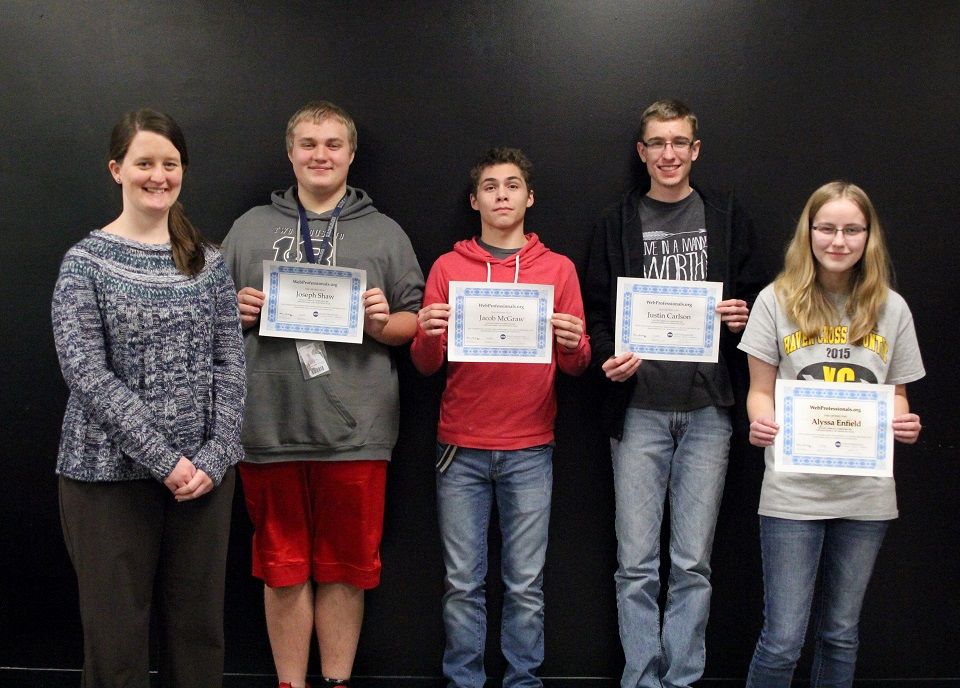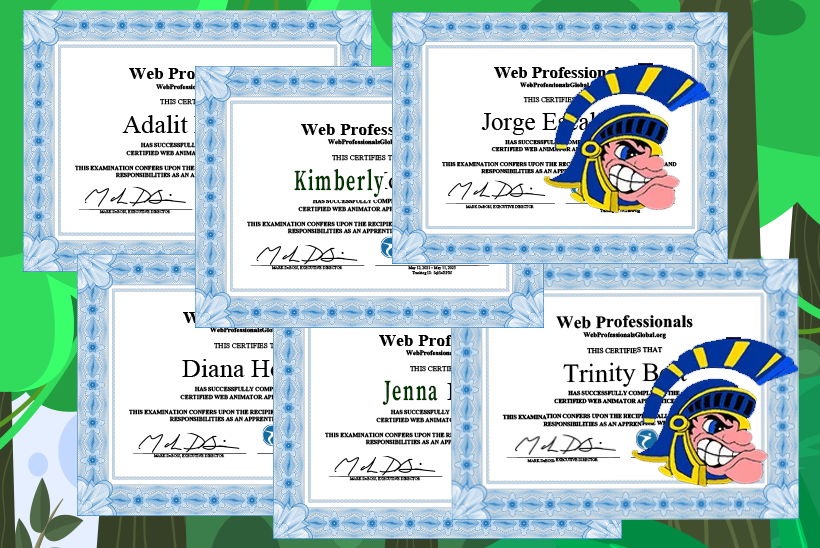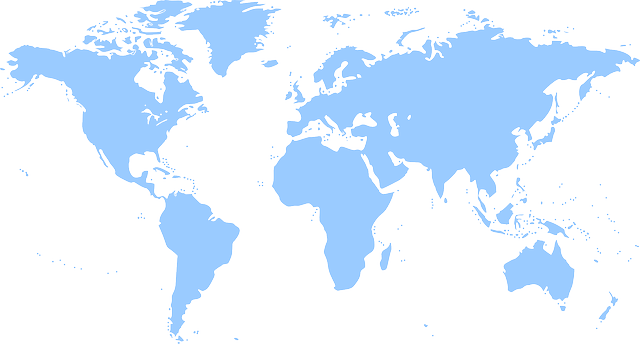Blog
Students in CA Earn Industry-Recognized Animation Certifications
Six students at Lakeview Leadership Academy High School in Victorville, CA recently completed their animation certifications, giving themselves career boosts in an exciting and rapidly growing STEM field.
The curriculum that Animation Instructor Nikki Jarvis used to prepare students for the career-building certifications is a media-rich and engaging course that gets learners excited about the world of animation and opens their eyes to potential career paths. It features tutorials and project-based learning that gives students an opportunity to build projects they can add to college and career-ready portfolios.
Preparing for Their Futures
The certification prep course delivers the training using CTeLearning’s Virtual Internship Model, which immerses the students in interactive story-based projects that look and feel like a career simulation. This provides students with a taste of what working in the real world is like. As the students live this experience, they learn the technical and soft skills necessary to be career-ready. Each student at LAHS was tasked with building their college and career-ready portfolio to prepare for their futures. This immersion in the design process gives each student a personal story of success they can tell as well as insights and best practices they take with them to help ensure they are truly college and career ready.
In the 2021-2022 school year, a special industry partnership will be underwriting the expense of these certifications for all students who complete the required course and project work. “We expect that schools being able to reward their students with international industry-recognized certifications will bring opportunities to more learners throughout the US. I see this as another way to get students to recognize that it is possible to pursue high-paying career opportunities—including many jobs that can be done from anywhere in the world,” said Joshua Frisch of CTeLearning. “This year’s certifications were paid for by a national grant partnership between the Web Professionals Association and CTeLearning.com. I appreciate all the urban and rural schools whose students benefited from these grants during the pandemic and lockdowns.”
The international industry-recognized animation certifications (IIRC) earned by the students are backed by the Web Professionals Association , which is CTeLearning’s partner association made up of professionals who work on the internet tools we use every day to work, live and play. Certifications from a professional organization such as the Web Professionals Association carry far more weight than certifications from testing companies, as standards are developed by industry professionals—including many who are responsible for hiring for their respective companies. A job applicant with an IIRC lets the interviewer know immediately that he or she has the hard and soft skills required to succeed in the job, which can help the employer cut down on resources spent training the new hire.
Nikki Jarvis, Web Animation Instructor at Lakeview Leadership Academy High School, said, “My Lakeview Leadership students shined through what was a tough year between the pandemic and lockdown. I am blessed with great students that I am proud of. This group who earned animation certifications now have industry-recognized credentials—international no less—as part of their portfolios. When these students apply to college they can proudly list this certification. When they apply for a job, they will list this credential. This is just one more thing that makes them unique and helps them to stand out from the competition. I must thank our administration for all their support. To Dr. Chamberlain and Dr. Collins, thank you so much for all your stellar support. Our program would not be here without you. I also want to thank all the parents who have been so supportive of all our young Spartans. On behalf of my students and our whole teaching team, I want to thank the Web Professionals and CTeLearning for the grant that paid for our students to take the credential exams. This was a tough year for all of us, and the grant did make it better. Thank you.”
A Student’s Perspective
One of the recipients of the Web Animator Apprentice Certification, Trinity Bolt, discussed how earning the certification has changed her future outlook:
“Thank you so much! I feel blessed for the opportunity, and I still cannot believe this is real. I was so excited when I heard I had earned my certification, and I instantly jumped up and told all of my family, even though they were sleeping. My brother wished me good luck, and when I told my mom, she was so proud that she ended up crying. All of my household knows I want to push myself in school and get as much credit as I can. Since college is really expensive I have been working to make my record look impressive so I could possibly get a scholarship. I wouldn’t have been able to get this good grade and privilege without Mrs. Jarvis helping other classmates and me with our schoolwork! I’m very happy that I passed the test, considering I was nervous during the entirety of it. Before I even joined this class, I had no idea how to animate and the skills it requires. With just a little dedication and practice, I have made it this far. I am so humbly proud of myself and look forward to how this will help me in my future. Hopefully I can work with Mrs. Jarvis and the others who have helped me, even after I graduate. Everyone around me has really helped push me to go for my dreams, and move onward. Thank you to everyone who helped me get here!”
Lakeview Leadership Academy Builds on the Legacy
Ms. Jarvis is always improving and growing her programs. During the COVID-19 pandemic, her program nearly doubled in size. Why? Word got out that her program was ready for both in-person and virtual classes. Students talked to counselors about the Animation course, and counselors scheduled the students into those classes. Fortunately, the self-directed nature of the courseware saved Nikki prep time, which gave her time to focus on her students. Not everything a teacher does is just about class content. During the pandemic, Nikki has seen the need to be not just the mentor facilitator but also make sure that each of her students was seen and heard. This is not Ms. Jarvis’ first experience, as she has been working for years to bring her students industry-recognized certifications. She has always avoided the testing company path, and sought out industry based credentials that come directly from industry. Now at Lakeview, she is continuing her mission to bring relevant credentials to her students.
Steve Waddell, founder of CTeLearning and co-creator of the Animation course, said, “Ms. Jarvis has been working with us since 2012. We appreciate that as she moved schools she brought our courseware along with her to continue her work in turning out the best college and career-ready students in the region. It is not uncommon for us to get emails over the weekend or late in the evening during the week as Nikki is onboarding new students or taking a moment to grow her own animation and graphic skills. She started using our Animation for Business and Marketing years ago as part of her program to get students engaged in the creative art of animation and understand how companies deliver their narratives to promote and market their products. Over the years, we have seen so many clever animations from her students. In her classes, Nikki challenges her students to create short-form animations to promote products, and she also gives students the chance to develop animations to express their ideas and give voice to their thoughts. Lakeview Leadership Academy is lucky to have Ms. Jarvis leading this program.”
Mark DuBois, Executive Director of the Web Professionals Association, said, “A few years ago, Ms. Jarvis’ students were the first in the US to receive our Web Animator Certification. Since then, she has added to the ranks of learners who have received the stackable international industry-recognized animation certifications from CTeLearning. This means that they can stack certifications and continue to grow in their skills. The Web Professionals Association has always delivered the message that being a successful professional takes more than just technical skills. To back this up, our Animation certification focuses not only on the technical skills of animation, but brings together ethics, creativity, problem-solving, marketing, and storytelling. Professionals in industry recognize how important and powerful an interactive message is to their client’s products and narratives. As professional web animators, designers, and technologists, we are always striving to do the best for our clients. On a personal note, I just love seeing the next generation of professionals getting started with their first set of credentials from us.”
Dr. Mauricio Castillo, STEAM Researcher at California State University, Los Angeles, said, “We hope to see these students here at CSULA. The Lakeview Leadership students completed a true STEAM project-based learning experience, and they even earned international industry-recognized certifications. Each of Ms. Jarvis’ students have a standing invite to come and check out our university—you are the students we love to have.”
Learn more
here
about how you can get your students excited about the growing world of animation and have them earn amination certifications with CTeLearning’s Animation course with the industry-recognized certification included.
Read More: Is Computer Animation a Good Career Choice?
Share To
Get in touch with us today!
You can book a demo directly using Calendly, call us directly at 913-764-4272 or 877-828-1216, or submit the form and we will reach out to you.
We look forward to helping you and your students.

Most Recent Posts





